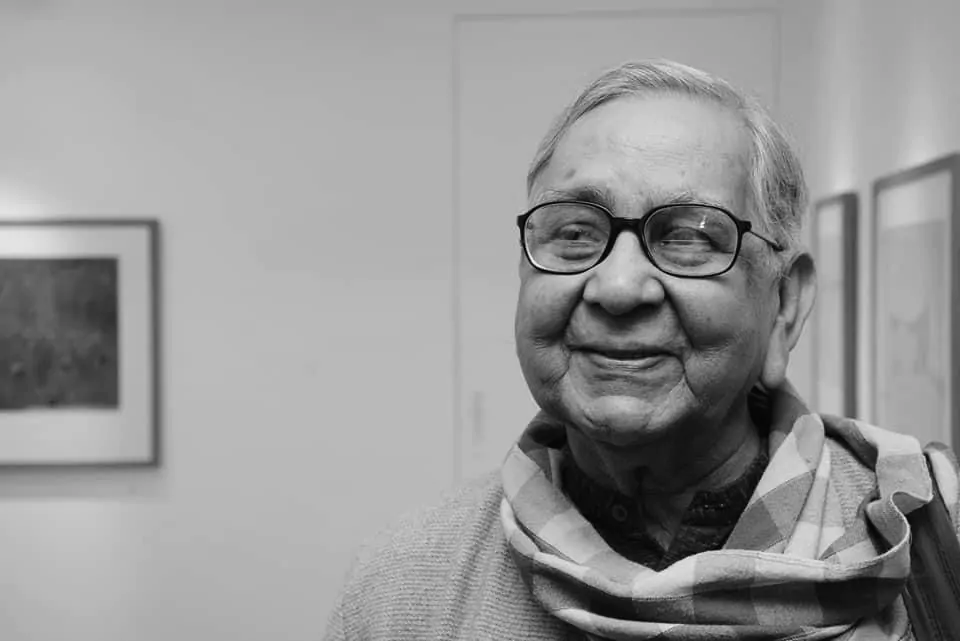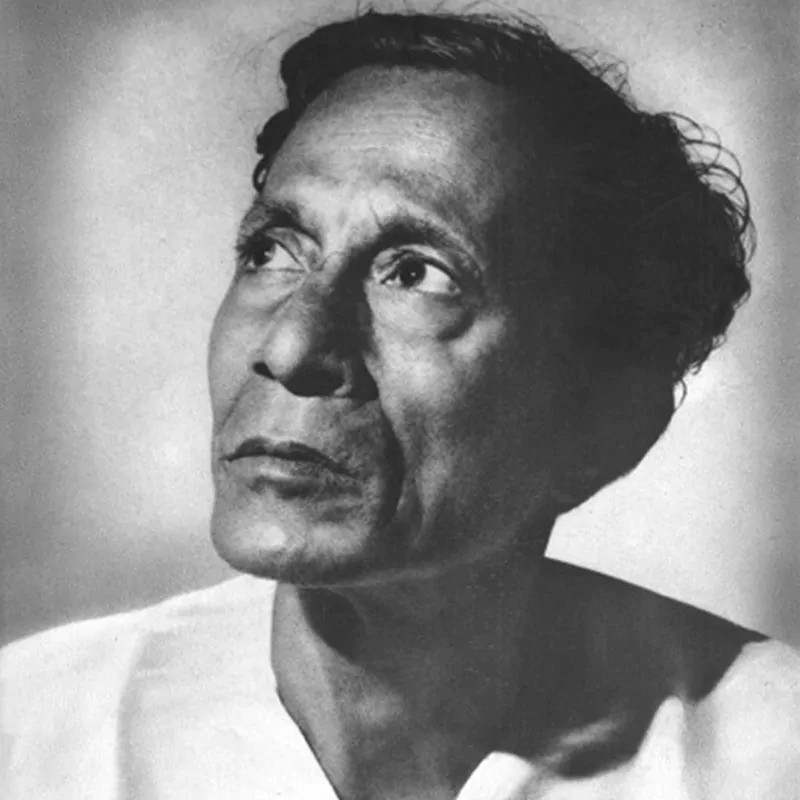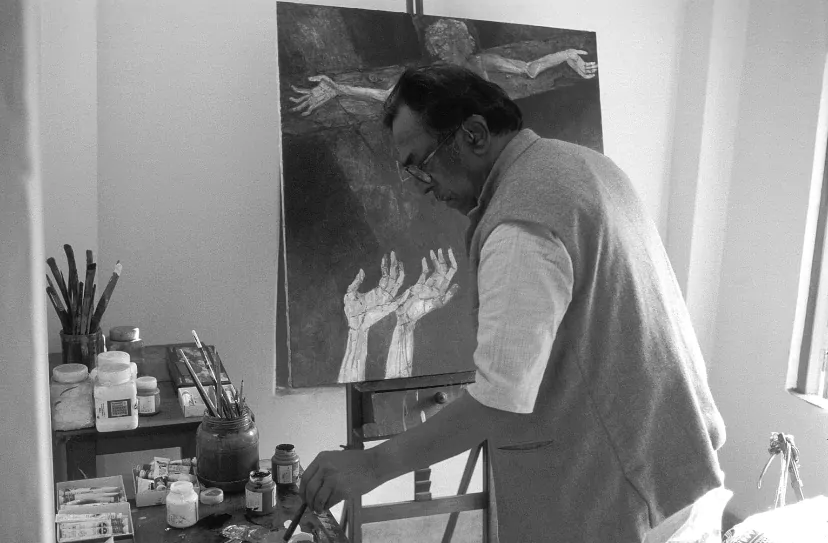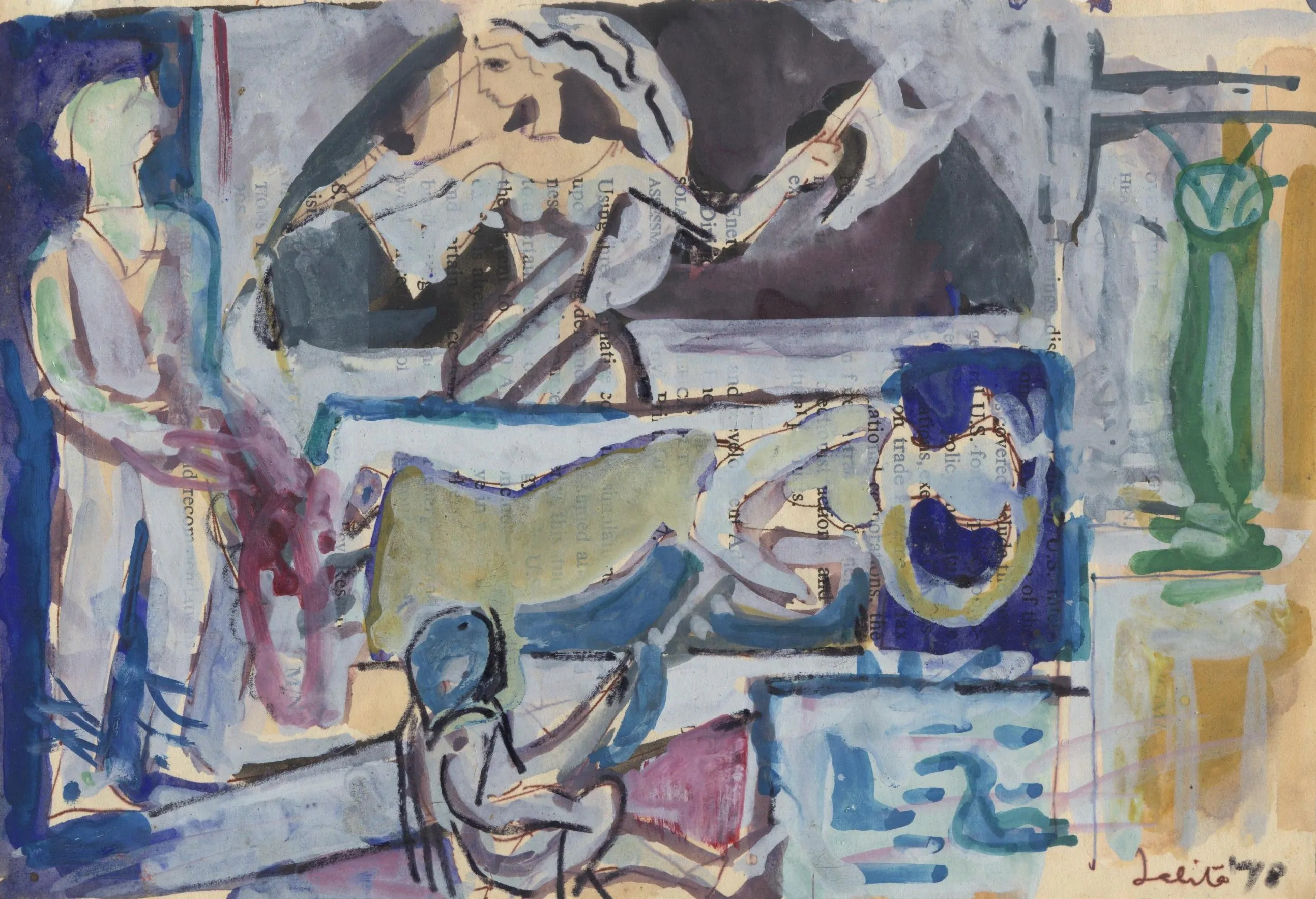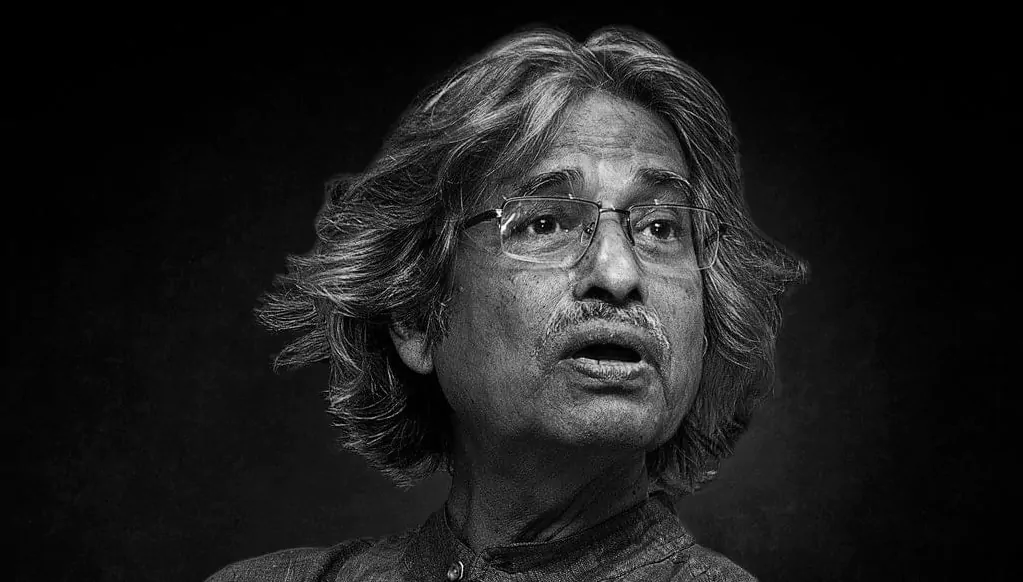Rabin Mondal: A Chronicler of our Times.
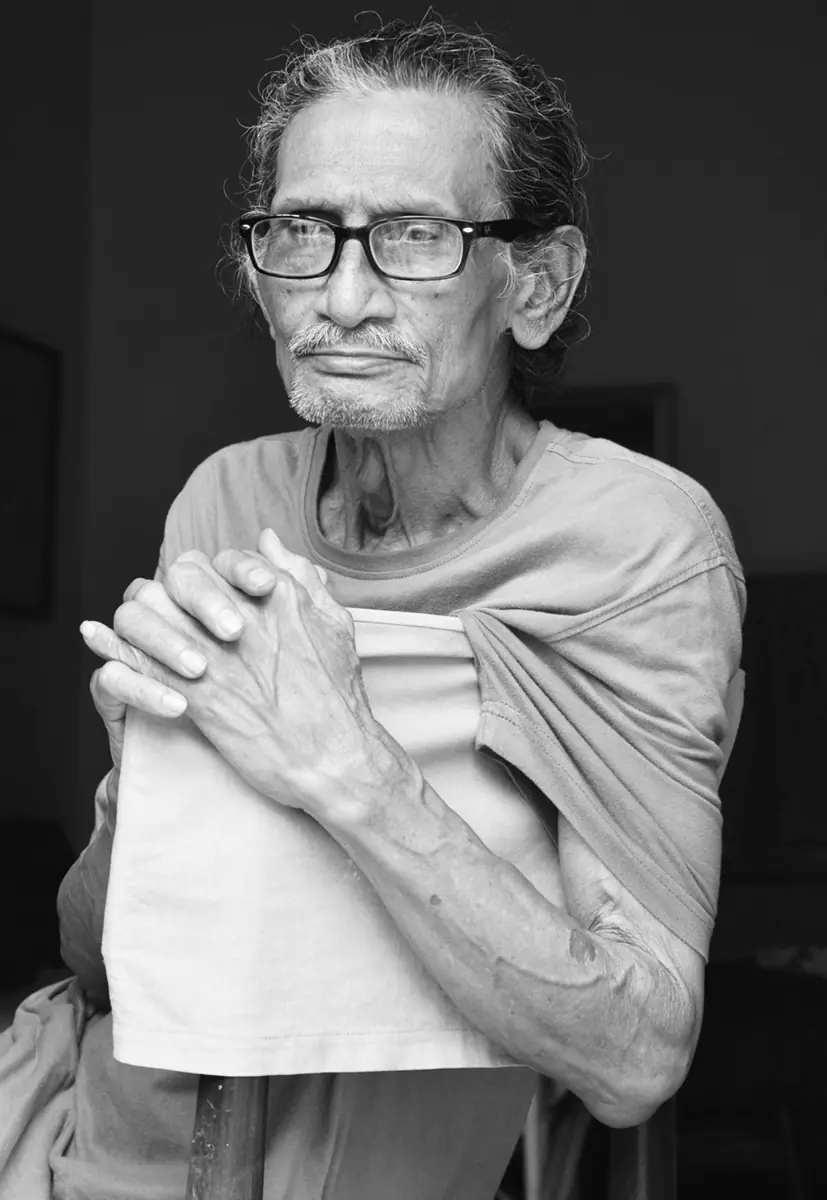
When in the early 70’s, Rabin Mondal’s drawings were exhibited for the first time at the South Asia Institute, Heidelberg, celebrated art historians such as Hermann Goetz and Heimo Rau discerned in them an unexpected cultural twirl which was difficult to define. It has been said that all art is an attempt at self actualization. Rabin Mondal’s earlier paintings were mainly concerned with the group identity of man-people trapped by their destiny, in primal interaction with their surroundings. Strong, virile, intense, these people symbolized the grandeur of human effort. And yet, there was that hidden comment on their elemental faith. The gentle irony remained- was this the final destiny of man and where was it expected to lead us?

Rabin Mondal 1944
His figures today are no longer part of the group identity of man, they have moved away towards a battered isolation. They now belong to a strange, silent, undefined world- often incoherent, often detached from the passions of our daily lives. As Rabin Mondal uses pure colour to accentuate a ritualistic aura in his subjects, the figures appear stuck in time. The King had served as a recurring symbol of power, decadence and the will to rule. Yet, as in Greek tragedy, there is a pathetic undercurrent of his weakness-a concession to human fallibility. There is a great dependence on primitive symbols and totems. Even his figures are often symbols of an existing and yet unseen intermediate relationship. Strangers and lovers, they all remain masked for they are all islands unto themselves.

King 1973
Emerging in the late 50’s, Rabin’s world view was truly existential. Not bothered about philosophies or traditions on art and aesthetics-he was like so many of his generation, trying to nail his own demons on the surface of the canvas. While some artists go back to the classics in search of an interpretative parallel to the present; artists like Rabin Mondal go back to the brutal protohistoric man and his vengeful deities. Over the years, his main preoccupation had been beats, heads, Kings, Queens, comedians, whores-a whole gallery of human beings and animals in harsh black lines, pungent reds, shocking blues and mortifying yellows. The human faces in most cases are foreheadless, wrinkled, terribly agonised and often deformed. Born in 1929, Rabin grew up in the industrial town of Howrah, near Calcutta just across the Ganga. He had known the city intimately, its nightmarish urban poverty and its growing squalor. With anguish he saw first hand the content of political ideologies draining the day-to-day power games.
In the 50’s he employed a cubist approach to his paintings, he did not adopt the timeless non-space of the Bengal School either or the flat surface employed by the Kalighat pats. By the late 50’s and early 60’s we find his canvasses with a broken and twisted form. The forms progressively simplified and slowly reached out towards the iconic. The distortion became consciously Expressionistic, spelt out with contrasting colours, charged with emotion. It is in the second half of the 70’s where the claustrophobic pictorial space suddenly yields to some kind of recession. Born out of this was the King series in which the artist yielded out of two contrary images- the hunter and the hunted.

Family, 1979.
The King and the Queen who appeared at this time seemed to be dwarfed by the crushing weight of the dark powers they wield-looking rather pathetic and forlorn. This is because he belongs to a generation to which angst is not an abstract philosophical idea but a crucifying personal experience. Situated in a milieu of dissolving faiths and moral-intellectual confusion, his work takes us to a strange silent world that needs penetration. The real inspiration which Mondal received, had come from the socio-political turmoil of the 40’s. The Bengal Famine of 1943, the horrors of the Second World War, the communal riots of 1946 and then Partition along with the influx of refugees shook the foundation of his mind.

Behind the Throne.
Those who have been familiar with the work of Rabin Mondal, have discovered again and again that he had steadfastly refused to follow convention. The nature of his art is such that the viewer is either overwhelmed by it or absolutely averse to it. Over the past seven decades, he had subverted the classical canons to express angst and rage towards bestiality and decadence; where the works have a nervous, inchoate narrative quality. In terms of a single-minded pursuit, Rabin Mondal’s art carry an allegorical quality. His body of work creates people apart from the human race through his individual use of colour and pigments. Above all, Rabin Mondal stands alone, no predecessors, no followers. This too, is very rare in the world of art.
Archetypal images and archaic forms evoke a sense of primitiveness, often opening up an affinity with tribal or folk forms. While using them, he invested his paintings with a raw vitality, simplicity and freshness. While Mondal didn’t paint the real, the essence of reality prevailed in his work morphologically.
- Vinayak Pasricha.








